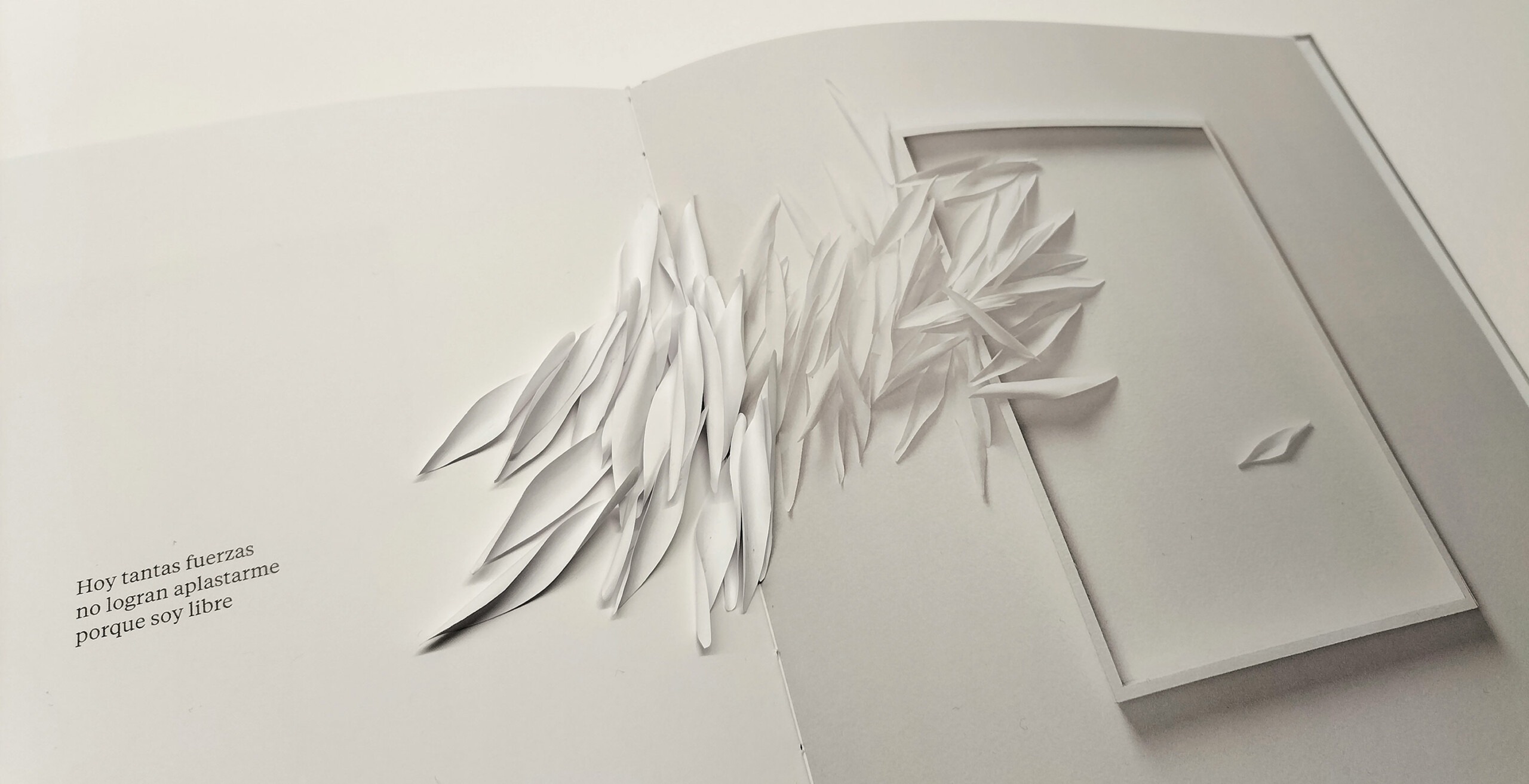So can life be, like this dialogue between two artistic worlds, like this work created by Cristina Almodóvar and Bert Daelemans: “Harmonious, shared, simple, infinitely mobile and full of beauty”. The adjectives –restrained– are put by them. Because The whisper of the petals (Ed. Messenger) -and both are the first to recognize it- covers much more. “It’s really infinite,” they add.
And without a doubt, life –like this unique book– is spiritual, contemplative, transcendent, profound, full, religious. “The spirituality is there, between the lines. We seek to say a lot with little. It is spiritual, it is contemplative, like the best art”, admits Daelemans, a Belgian Jesuit living in Madrid and professor of Theology at the Comillas Pontifical University.
This encounter between the sculptor and the writer, between art and poetry, between the images that make up petals that fall on a rectangle and the word contained in the haiku, between the secular and the consecrated life, it is also with God, who is the one who whispers between the pages that make up each diptych and each shared reflection: each composition by Cristina Almodóvar is accompanied by a short poem by Bert Daelemans.
“Perhaps God is in the gifts we have or each one of us transmits it in the gifts we have. We are both very sensitive, and we have projected our sensitivity there. The significance is very present”, confirms the artist. “I am also convinced that this book tries to listen –continues the architect, engineer and theologian by training– and that, in the end, what you hear takes you back to the origin”.
This contemplation and spirituality is not spontaneous, the dialogue and creative process between Cristina Almodóvar and Bert Daelemans has reinforced and exposed it even more. “What attracts me in Cristina’s works is not nature itself, but the deep reflections on life, humanity, existence, but also on the wind, movement… And here the same thing, that whisper that is sculpted by means of petals and shadows. The wind, the whisper, are those things in life that are invisible but are essential”, exposes the Jesuit, also author of vulnerability in art (PPC, 2021).
“Actually, I always work that way, but this has been perhaps more because the elements were more refined –responds the artist, present in multiple collections such as DKV, Artphilein Foundation or BMW–. I am very simple and the less, the more I get. It is that with very little everything multiplies. The less there is, the more it gives to think. In fact, the images that have many petals are like more concrete; however, those who have less allow us to think more openly”.
Quite an experiment
White is the only color in the compositions, made on paper and photographed for the book. “It responds to the pleasure of working with very little. When you only use white, the only thing that exists is the shadow it casts, and the shadow is something that motivates me a lot because it connects me with the three-dimensional. Let’s say that in the two dimensions there is no shadow and in the three there is. For me, with white, everything becomes spatial”.
the haiku, the thousand-year-old Japanese metric, comes to be the target, in that expressive capacity that he also has of ‘less is more’. “There is no light for / who does not want their shadows / just like the light”, writes Daelemans. “I don’t know if it is the haiku or the silence left by the haiku that is equivalent to white,” the Jesuit describes. Words are like petals. It is true that the metric of 5-7-5 limits a lot, but it allows those small windows, which concentrate and condense the light. It has been quite an experiment, because for me it is a very new literary genre”.

